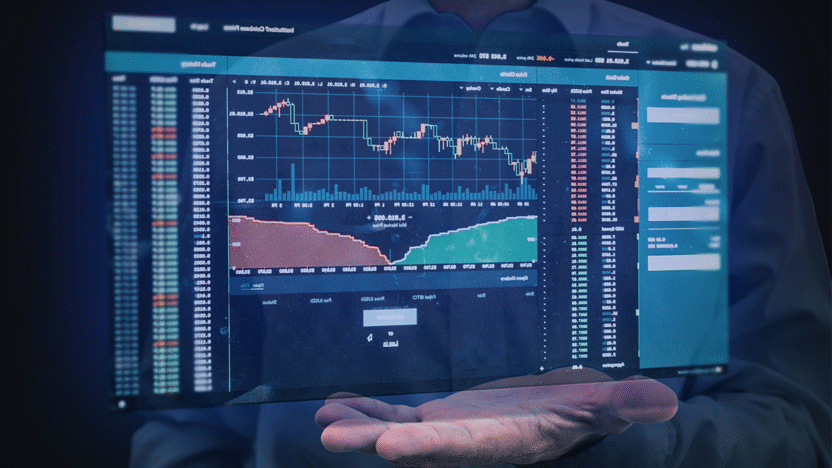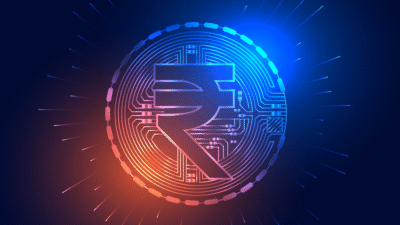The fintech revolution is dramatically reshaping the financial services industry by leveraging cutting-edge technologies such as artificial intelligence, blockchain, big data, and mobile platforms. These innovations are streamlining traditional banking processes, making financial services faster, more accessible, and user centric. From digital wallets and peer-to-peer lending to robo-advisors and decentralized finance (DeFi), fintech is breaking down barriers and empowering consumers with greater control over their financial lives.
Traditional banks are now embracing fintech to remain competitive, improve customer experience, and meet evolving market demands. As fintech continues to evolve, it’s poised to redefine the future of global finance and economic inclusion.
Table of Contents:
- Introduction to Fintech and its Evolution
- Traditional Finance vs. Fintech: The Disruption
- Mobile Payments & Digital Wallets
- Peer-to-Peer Lending and Neobanking
- Robo-Advisors and Automated Investment Platforms
- The Role of AI, Machine Learning & Big Data
- Blockchain & Cryptocurrencies in Fintech
- Regulatory Challenges and Opportunities
- Conclusion
1. Introduction to Fintech and its Evolution
- In recent years, the financial services landscape has undergone a seismic transformation driven by the rise of financial technology, or fintech. What began as a niche sector offering online payments and mobile banking has now evolved into a global force reshaping everything.
- This includes innovations in mobile payments, digital lending, robo-advisors, blockchain-based assets, peer-to-peer lending platforms, and beyond.
- Fintech companies leverage technologies like artificial intelligence (AI), blockchain, big data, and cloud computing to offer faster, cheaper, more secure, and more user-friendly services than traditional financial institutions.
- Over the past decade, fintech has shifted from novelty to necessity. As smartphone adoption soared and digital literacy improved, consumer expectations evolved. People now demand seamless, on-demand access to their finances and fintech delivers. From apps that round up spare change for investment to platforms enabling instant international money transfers, fintech has redefined convenience and control for both consumers and businesses.
- Today, the fintech industry is valued in the trillions of dollars, attracting massive investments from venture capitalists and strategic investors. Neobanks, payment gateways, crypto exchanges, and decentralized finance (DeFi) platforms have all become vital components of the new digital economy.
- New technologies emerge such as embedded finance, open banking, and AI-driven risk modeling fintech is poised to further revolutionize not just financial services, but the broader economy.
2. Traditional Finance vs. Fintech: The Disruption
- For decades, traditional financial institutions banks, credit unions, insurance firms, and stockbrokers have acted as gatekeepers to the world’s financial systems. These entities operated on long established models: brick-and-mortar branches, in-person transactions, lengthy paperwork, and tightly controlled processes. While these models provided a sense of stability, they also created barriers: limited access, slow service, high fees, and a lack of transparency.
- Enter fintech a wave of innovation aimed at disrupting the status quo by rethinking how financial services are delivered. Unlike legacy institutions weighed down by outdated infrastructure and rigid regulations, fintech companies are agile, digital native, and laser focused on customer experience.
User-Centric Design vs. Institutional Protocols
Traditional financial institutions have historically prioritized internal processes, compliance, and risk management sometimes at the cost of user experience. By contrast, fintechs start with the user in mind, offering intuitive interfaces, 24/7 access, and personalized features through mobile apps and web platforms. In many cases, onboarding is instant, documentation is automated, and services are tailored using real-time data.
Speed and Accessibility
Where banks might take days or even weeks to approve loans, fintech platforms can assess creditworthiness and release funds in minutes using alternative data and AI algorithms. Fintechs have opened access to underserved segments: gig workers, freelancers, small businesses, and individuals with limited credit histories. Traditional finance often left these users behind due to rigid credit-scoring models and conservative lending standards.
Cost and Efficiency
Fintech solutions often come at lower costs than traditional financial products. By eliminating the need for physical branches, reducing manual labor through automation, and leveraging economies of scale, fintech firms can offer free checking accounts, low-cost transfers, and reduced investment fees. This contrasts sharply with the typical fees charged by banks for wire transfers, account maintenance, and financial advice.
Innovation in Services
Fintech has introduced entirely new financial products and services that traditional finance either ignored or was slow to adopt:
- Robo-advisors offer algorithm-driven investment advice at a fraction of the cost of human advisors.
- Peer-to-peer (P2P) lending platforms connect borrowers directly with investors, cutting out the middleman.
- Buy Now, Pay Later (BNPL) services provide instant credit at checkout, challenging credit cards.
- Cryptocurrencies and DeFi platforms propose entirely decentralized alternatives to banking and investing.
Transparency and Trust
Fintech companies often leverage transparency as a competitive advantage. Real-time notifications, open data sharing, and clear fee structures build trust among users especially younger generations who value ethical business practices and digital literacy. In contrast, traditional financial systems have often been viewed as opaque, bureaucratic, and slow to respond to consumer needs.
Challenges to the Disruption
While fintech has made massive strides, it’s not without its challenges. Fintech startups must still navigate complex regulatory landscapes and earn consumer trust in matters involving sensitive financial data. Unlike banks with decades of compliance experience, fintechs face a learning curve in risk management and security. However, this very pressure is pushing them to develop new models for RegTech (regulatory technology) and compliance automation, further innovating the industry.
3. Mobile Payments & Digital Wallets
One of the most visible and impactful areas of fintech innovation is the rise of mobile payments and digital wallets. These technologies have transformed how people make purchases, send money, and manage transactions paving the way for a cashless economy. In an age where convenience and speed are paramount, mobile payments have become a cornerstone of modern finance, especially in emerging markets and among younger, tech-savvy users.
What Are Mobile Payments and Digital Wallets?
- Mobile payments refer to financial transactions conducted through a mobile device, often using apps or contactless technologies such as NFC (Near Field Communication).
- Digital wallets (or e-wallets) are mobile applications or cloud-based platforms that store users’ payment information securely and enable electronic transactions without the need for physical cards or cash.
Popular examples include:
- Apple Pay, Google Pay, Samsung Pay
- PayPal, Venmo, Cash App
- AliPay, WeChat Pay (China)
- PhonePe, Google Pay (India)
- M-Pesa (Kenya)
The Global Shift Toward Mobile Payments
The adoption of mobile payments has exploded globally:
- In Asia, especially China and India, mobile payments have become the primary method of consumer transactions.
- In Africa, platforms like M-Pesa have revolutionized financial access for the unbanked, allowing users to send money, pay bills, and even receive salaries through basic mobile phones.
- In developed countries, mobile payments are now seamlessly integrated into daily commerce, from in-store purchases to online shopping.
Benefits of Mobile Payments and Digital Wallets
- Speed & Convenience: Tap-and-go payments, instant peer-to-peer transfers, and mobile bill payments eliminate queues, cash handling, and manual data entry.
- Security: Advanced encryption, biometric authentication (like fingerprint or face ID), and tokenization make mobile wallets more secure than physical cards.
- Cost-Effective: Reduces the need for physical infrastructure like ATMs and reduces operational costs for banks and merchants.
- Financial Inclusion: Digital wallets provide access to basic financial services for people without traditional bank accounts, especially in rural or underbanked regions.
- Data Insights: Transactions generate real-time data, enabling personalized offers, better financial tracking, and targeted marketing.
QR Codes and Contactless Payments
A major innovation in mobile payments is the use of QR codes, which allow users to scan and pay instantly. This has been particularly effective in small businesses and street markets, where traditional card machines are not feasible.
Contactless payments using NFC have also grown, especially post COVID, as they allow for hygiene conscious, touch-free transactions. Retailers globally now support “tap to pay” technology for added speed and safety.
4. Peer-to-Peer Lending and Neobanking
P2P lending platforms connect individual borrowers directly with individual lenders or investors, bypassing traditional financial institutions like banks or credit unions. These platforms act as marketplaces, matching people who need loans with those willing to fund them in exchange for interest.
How it works:
- Borrowers apply for a loan on the platform, often with fewer requirements than a bank.
- Lenders (or investors) review borrower profiles and choose to fund portions of their loan.
- The platform facilitates repayments and collects fees for its service.
Popular P2P platforms:
- LendingClub (USA)
- Prosper (USA)
- Zopa (UK)
- Funding Circle (UK and global)
- Faircent (India)
Advantages of P2P Lending
- Accessibility: Individuals and small businesses who are underserved by traditional credit systems can access funding.
- Competitive Rates: Borrowers may get better rates than banks, while lenders often earn higher returns than from savings accounts or bonds.
- Speed: Loan approvals and disbursals are faster due to streamlined processes and fewer bureaucratic layers.
- Transparency: Platforms often display borrower ratings, risk categories, and expected returns.
What Are Neobanks?
Neobanks (also called challenger banks or digital-only banks) are online-only financial institutions that operate without physical branches. They offer a modern, mobile-first experience, often with lower fees, real-time spending insights, and AI-driven financial tools.
Core offerings typically include:
- Checking/savings accounts
- Debit cards
- Peer-to-peer transfers
- Budgeting tools
- Bill payments
- Instant notifications
Some neobanks also offer credit products, investment services, and cryptocurrency access.
Popular neobanks:
- Chime (USA)
- Revolut (UK/global)
- N26 (Europe)
- Monzo (UK)
- RazorpayX and Jupiter (India)
Advantages of Neobanks
- Lower Fees: No minimum balances, no maintenance fees, and often free ATM withdrawals.
- Real-Time Access: Instant transaction alerts, spending categorization, and budget analysis tools.
- Convenience: Everything is done via mobile or desktop apps—no need to visit a branch.
- Innovation: Faster updates and new features, such as card freezing, savings goals, and crypto trading.

5. Robo-Advisors and Automated Investment Platforms
Robo-advisors are online platforms that use algorithms and automation to offer financial planning and portfolio management with minimal human intervention. They assess users’ risk tolerance, goals, and investment timelines—then recommend and manage diversified portfolios, typically made up of ETFs (Exchange-Traded Funds).
These platforms handle:
- Portfolio creation
- Automated rebalancing
- Tax-loss harvesting
- Goal-based investing
- Retirement planning
Popular robo-advisors include:
- Betterment (USA)
- Wealthfront (USA)
- Nutmeg (UK)
- Scalable Capital (Germany)
- Groww, Zerodha Coin (India)
Benefits of Robo-Advisors
- Low Fees: Typically charge 0.25% to 0.5% of assets under management, far lower than traditional advisors (who may charge 1%+).
- Accessibility: Many platforms have low or no minimum investment thresholds, allowing users to start investing with as little as $1.
- Convenience: Users can sign up, create a strategy, and monitor performance entirely through a mobile app or website.
- Consistency: Algorithms ensure portfolios stay aligned with target allocations, rebalancing automatically without emotional bias.
- Education & Empowerment: Many robo-advisors include educational tools, calculators, and projections to help users understand their investments.
How They Work
- Onboarding: Users answer a series of questions about their income, goals, time horizon, and risk tolerance.
- Portfolio Design: Based on the responses, the platform creates a customized mix of stocks, bonds, and sometimes alternative assets.
- Automation: The platform automatically invests contributions, reinvests dividends, and rebalances the portfolio periodically.
- Monitoring & Reporting: Users can track performance and adjust through a user-friendly dashboard.
6. The Role of AI, Machine Learning & Big Data
Artificial Intelligence (AI), Machine Learning (ML), and Big Data are not just buzzwords in the fintech space. They are foundational technologies driving a seismic transformation in how financial services are delivered, secured, and personalized. From fraud detection and credit scoring to algorithmic trading and customer service, these technologies are redefining the speed, scale, and intelligence of modern finance.
AI, ML, and Big Data: Definitions and Differences
- Artificial Intelligence (AI): A broad field focused on creating systems that can simulate human intelligence reasoning, learning, decision-making.
- Machine Learning (ML): A subset of AI that uses algorithms to identify patterns in data and learn from it without being explicitly programmed.
- Big Data: Refers to the enormous volume of structured and unstructured data generated daily from transactions and mobile use to social media and IoT.
Together, they allow fintech platforms to analyze vast datasets in real time, recognize trends, and make predictive decisions.
AI in Fraud Detection and Prevention
Traditional rule-based fraud detection systems are often slow and rigid. In contrast, AI-powered systems:
- Analyze real-time transactions for anomalies
- Flag suspicious activity (e.g., unusual login location, inconsistent spending patterns)
- Continuously learn from new fraud tactics
- Reduce false positives, which improves user experience
Smarter Credit Scoring
AI and ML allow for alternative credit scoring models using non-traditional data such as:
- Utility bill payments
- Social media behavior
- Mobile phone usage
- Transactional history
This is especially impactful in emerging markets, where many users lack formal credit histories. AI-driven credit systems empower lenders to reach the underbanked and unbanked safely.
Personalization of Financial Services
Big data analytics combined with ML enables hyper-personalization:
- Custom investment portfolios
- Real-time budget alerts
- Tailored financial advice
- Targeted product recommendations
Algorithmic Trading and Investment
AI and ML models are central to quantitative finance and algorithmic trading, where they:
- Identify market inefficiencies
- Execute trades within milliseconds
- Optimize portfolios in real-time
- Reduce emotional decision-making
Hedge funds and robo-advisors rely heavily on machine learning to generate better alpha while managing risk more effectively.
Chatbots and Virtual Financial Assistants
AI-powered chatbots are now essential in fintech customer service:
- Handle thousands of queries simultaneously
- Provide 24/7 support with instant responses
- Resolve issues like balance checks, fraud alerts, and card blocking
- Escalate complex issues to human agents when needed
7. Blockchain & Cryptocurrencies in Fintech
At its core, blockchain is a decentralized, distributed ledger that records transactions in a secure, transparent, and immutable way. Each “block” of data is linked to the one before it is using cryptographic techniques, forming a “chain.”
Key properties:
- Decentralization: No central authority; data is shared across nodes.
- Transparency: All network participants can verify transactions.
- Immutability: Once written, data cannot be altered without consensus.
- Security: Uses cryptographic algorithms to secure data and verify identities.
This makes blockchain ideal for fintech applications that require trust, traceability, and automation.
Cryptocurrencies: The First Fintech Killer App
Cryptocurrencies, like Bitcoin and Ethereum, are digital assets that operate on blockchain networks. They serve various functions:
- Medium of exchange (e.g., Bitcoin)
- Utility tokens (e.g., ETH for Ethereum smart contracts)
- Governance tokens for decentralized platforms (e.g., UNI for Uniswap)
- Stablecoins pegged to fiat currencies (e.g., USDC, USDT)
- Reduces identity fraud
- Speeds up onboarding
- Improves compliance
Decentralized Finance (DeFi)
DeFi is an ecosystem of blockchain-based financial applications that replicate traditional banking services without intermediaries.
Core services include:
- Decentralized lending and borrowing (e.g., Aave, Compound)
- Decentralized exchanges (DEXs) (e.g., Uniswap, PancakeSwap)
- Yield farming and staking
- Algorithmic stablecoins and derivatives
Benefits:
- Open to anyone with internet access
- No credit checks or central approvals
- Transparent, auditable smart contracts
Central Bank Digital Currencies (CBDCs)
Governments worldwide are exploring CBDCs as blockchain-based representations of fiat currencies. These aim to combine the benefits of digital currency (speed, traceability) with the trust of central banks.
Countries testing or deploying CBDCs:
- China (Digital Yuan)
- India (Digital Rupee)
- EU (Digital Euro)
- Bahamas (Sand Dollar)
CBDCs could reshape payments, monetary policy, and financial inclusion—especially in developing countries.
Crypto Wallets and Exchanges
For users, wallets and exchanges are the front door to crypto-fintech:
- Custodial wallets (e.g., Coinbase, Binance) hold assets on behalf of users.
- Non-custodial wallets (e.g., MetaMask, Trust Wallet) give users full control and private keys.
- Centralized exchanges (CEXs) offer liquidity, fiat on-ramps, and trading tools.
- Decentralized exchanges (DEXs) enable peer-to-peer swaps without intermediaries.
Fintech integrates crypto wallets into mobile apps to allow buying, selling, and storing crypto alongside traditional financial services.
8. Regulatory Challenges and Opportunities
The fintech revolution has outpaced traditional regulatory frameworks, challenging governments and financial institutions to keep up with rapid technological advancement, new business models, and evolving risks. While regulation is often seen as a barrier to innovation, it also offers a unique opportunity to build trust, stability, and scalability in the sector. The future of fintech will hinge on how well regulation adapts and how fintech firms proactively align with evolving standards.
Why Regulation Matters in Fintech
Fintech’s promise of speed, convenience, and democratization comes with serious responsibilities:
- Handling sensitive financial and personal data
- Enabling massive volumes of transactions
- Redefining lending, investing, payments, and banking
Without proper oversight, fintech can lead to:
- Consumer harm (scams, hidden fees, fraud)
- Systemic risks (platform failures, volatility)
- Privacy violations
- Illicit finance (money laundering, terrorism funding)
Regulation ensures consumer protection, financial stability, and market integrity, which are essential for long-term growth.
Region-Specific Regulatory Trends
-
United States:
The fintech sector is regulated by a complex mix of federal and state agencies (SEC, CFTC, OCC, CFPB). There’s growing debate over stablecoins, crypto ETFs, and federal charters for neobanks.
-
European Union:
Leading in open banking, data privacy, and now developing MiCA (Markets in Crypto-Assets) to provide a unified regulatory framework for crypto and digital assets.
-
Asia-Pacific:
Singapore is a fintech hub with clear licensing paths. India has tightened controls on payments and lending apps, especially those involving foreign (esp. Chinese) funding. China has banned crypto trading and cracked down on fintech giants like Ant Group.
-
Africa & LATAM:
Emerging markets are innovating in mobile money (e.g., M-Pesa), but face infrastructure gaps and uneven regulatory development.
How Fintech Can Prepare
To navigate the regulatory landscape, fintech companies should:
- Design with compliance in mind (e.g., bake KYC into onboarding)
- Engage with regulators early and transparently
- Stay agile by building modular, scalable systems that can adapt to new rules
- Invest in legal and compliance expertise
- Use RegTech partners to reduce manual compliance workloads
- Build internal audit and reporting capabilities from day one
9. Conclusion
The fintech revolution is not merely a technological upgrade it is a paradigm shift in how financial services are created, delivered, and experienced. From seamless digital payments to decentralized finance, fintech is dismantling traditional barriers, empowering individuals and businesses with more control, access, and transparency.
This transformation is bringing greater efficiency, lower costs, and broader inclusion across global markets. Yet, it also demands robust regulatory frameworks, ethical responsibility, and constant innovation to ensure its long-term sustainability.
As we move forward, the most successful fintech solutions will be those that strike a balance between innovation and trust those that solve real-world problems while upholding privacy, fairness, and security. The financial world is no longer what it will never be the same again.




